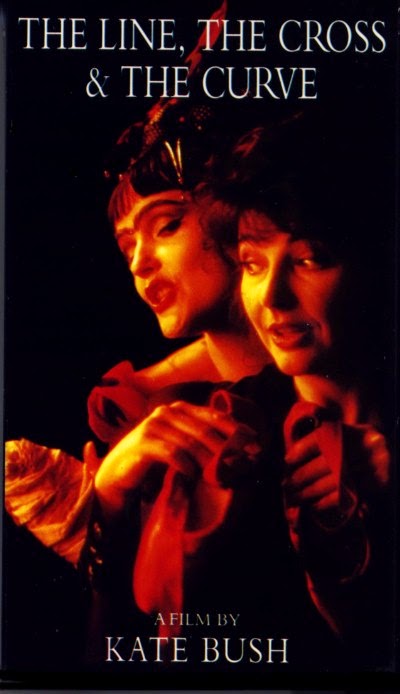With a debut single like “Wuthering Heights”, albums like The Dreaming and conceptual suits like “The Ninth Wave”, Kate Bush is anything but predictable with seemingly everything she’s involved with coming out of left field. As evidenced by her music, Bush is clearly a film fanatic and has an obvious appreciation for cinema of a slightly sinister nature having expressed admiration for Hitchcock in interviews as well as writing songs like “The Wedding List” based on Truffaut’s The Bride Wore Black (1968), “Get Out of My House” inspired by The Shining (1980) and of course the sampling of the “Its in the trees! Its coming!” line from Curse of the Demon (1957) on the title track for the Hounds of Love album. There has always been a visual side to Bush’s music and with The Sensual World album Bush took to directing her own videos. For her 1993 album The Red Shoes, Bush again chose to do things a bit differently. Rather than simply film videos for the singles, Bush instead chose to write, direct and star in a film around the songs loosely inspired by the 1948 Michael Powell film which gave The Red Shoes album its name. In classic Bush fashion, the resulting film, The Line, The Cross & The Curve is as bizarre as it is original and left many, even some of Bush’s most loyal supporters scratching their heads.
Following a rehearsal, a dancer (Bush) is startled when out of nowhere a mysterious woman (Miranda Richardson) appears before her from behind her mirror. The woman frantically begs the dancer to help her return home, which she agrees do to by simply drawing a line, a cross and a curve on three sheets of paper. As a gift, the women gives the dancer her pair of red dancing shoes, however once she puts them on she realizes she’s been tricked as the shoes are cursed and she is unable to stop dancing. A strange guide appears beckoning her and the dancer is sucked into a fantasy world behind the mirror, forced to find the woman and free herself from the cursed red shoes.
Hardly surprising considering its creator, The Line, The Cross & The Curve is a quintessential Bush creation being wonderfully weird and defying both convention and any attempt to pigeonhole it. Despite being constructed around six music videos, the film is much more than simply a collection of video clips and at the same time the last thing the film plays out like is a standard musical. Whatever it is, it works. One of the reasons it works as well as it does is because the transitions from the music videos and the narrative interruptions in-between are smoothly executed and move the story along quite nicely no matter how illogical it may seem. Its the videos though which are the main attraction. As a director, Bush clearly has an excellent eye and there is certainly isn’t a lack of innovative ideas with each of the videos having their own distinct visual personality (and musical as well with The Red Shoes being one of Bush’s most eclectic albums) with opener “Rubberband Girl” showcasing Bush’s innovative dancing, “The Red Shoes” recalling the phantasmagoric flamboyance of Ken Russell whereas it would appear David Lynch was a source of inspiration for Bush during the opening moments of “Lily”. On the opposite end of the spectrum would be the euphoric, almost ceremonial fruit squishing set to the tropical tune of “Eat the Music”. Even a relativity simple video like “And So Is Love” feels like a scene out of a gothic horror film thanks to Bush’s stylish lighting choices.
In August of 2014 when Bush made her return to the live stage with her series of “Before the Dawn” concerts in London there seemed to be a newfound interest in all things Kate Bush with multiple albums even re-entering the British charts. Despite this, The Line, The Cross & The Curve got little to no mention at all and that was probably to Bush’s liking. While there are numerous Bush fans who’ve found the film hard to take too, Bush herself is perhaps its harshest critic, claiming in interviews that she feels she let her crew and Miranda Richardson down and is really only happy with very little of the film. She also blatantly referred to it as a “load of bullocks”. In fact Bush also expressed disappointment in the production of The Red Shoes album even re-recording seven tracks for her 2011 album The Director’s Cut. The film has yet to be released on DVD and unless Bush has a change of opinion it will probably stay that way for a while which is too bad as its really a testament to Bush‘s creativity. Fans of Bush who’ve yet to see it should track it down just because but fans of strange cinema that might not be familiar with Bush should also seek out The Line, The Cross & The Curve and in the process be introduced to a brilliant artist.























